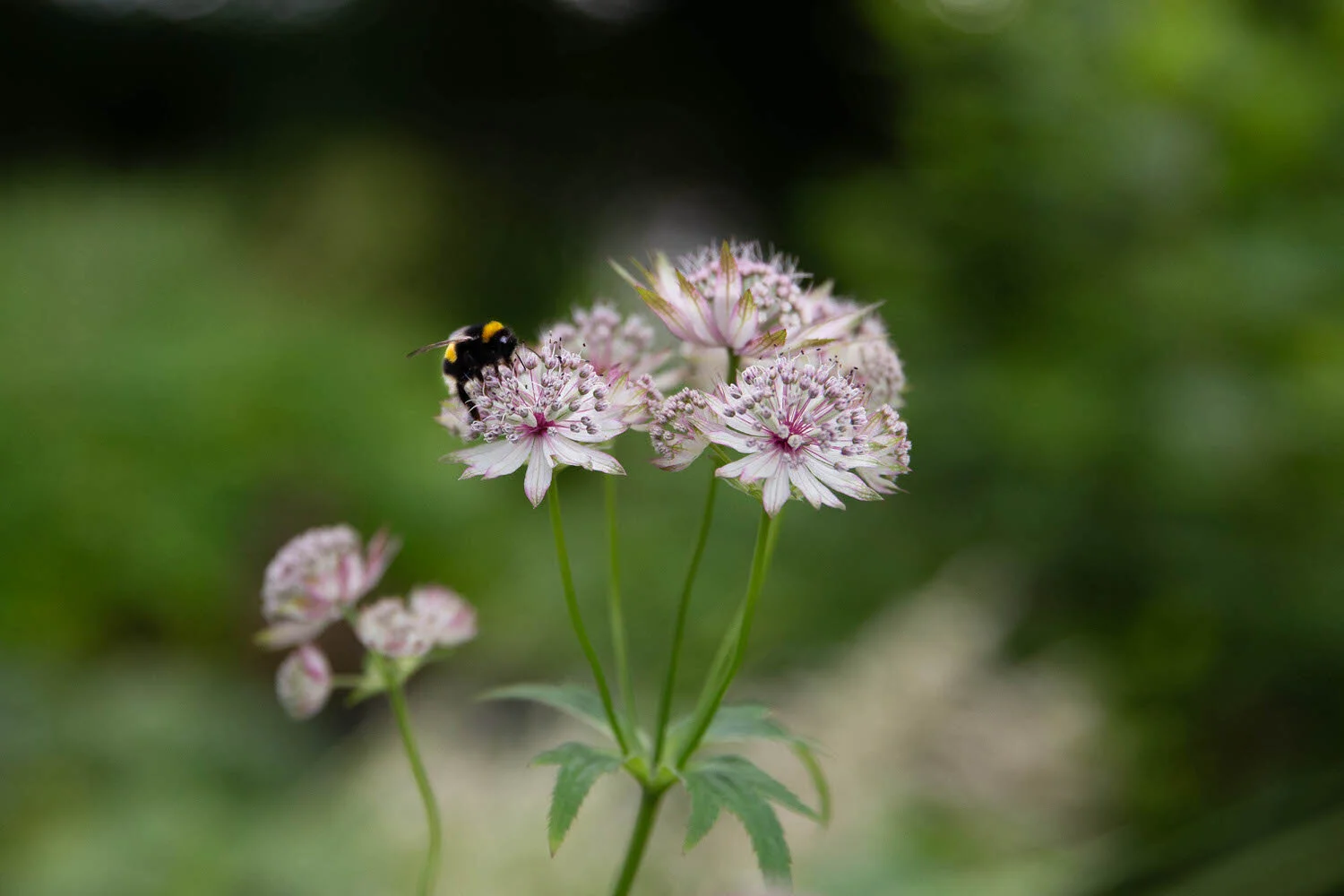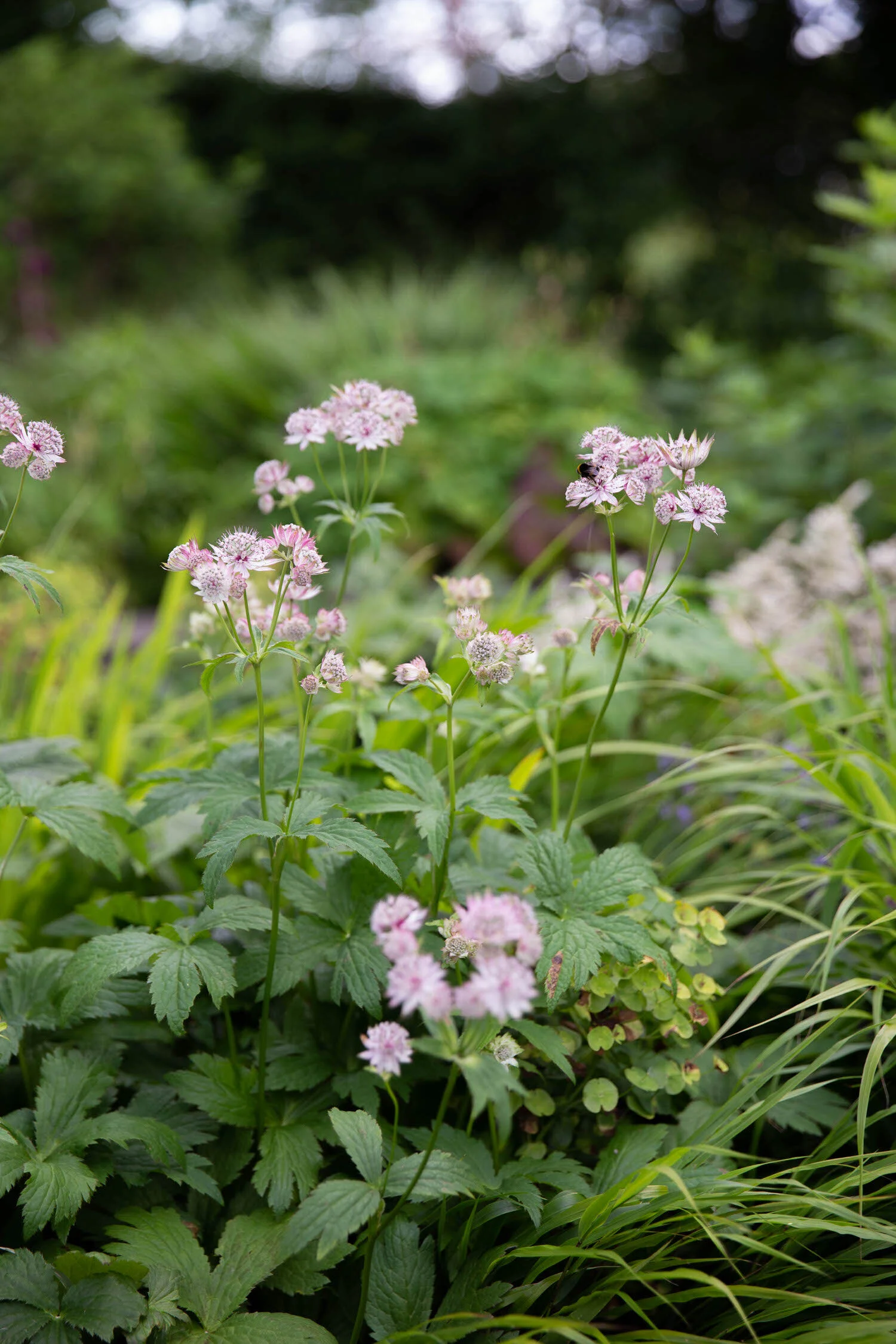Plant guide : astrantia
Botanical name:
Astrantia Major
If I could choose just one flower to grow in my garden it would be Astrantia. It’s got pretty much everything going for it. Its flowers are a burst of tiny star-shaped blooms, held in a dome shape as if on a pin-cushion (giving it the common name of Hattie’s pin cushion). It’s got a long flowering period, blooming happily from June all the way to late August and is a favourite with bees and other pollinators.
Its leaves are attractive: slightly-glossy serrated deep green foliage. And as if that wasn’t enough, it’s also pretty much impervious to common garden pests such as slugs and snails. The only small downside to the otherwise trouble-free astrantia is that it really doesn’t like to dry out. But as long as you plant it somewhere fairly damp, or remember to water it frequently, it guarantees to be one of the most attractive, hassle-free plants in the garden.
Plant type
Herbaceous perennial
Astrantia will grow back year after year, but they die back down in winter completely below the ground, to reappear again the following Spring.
Growing conditions
Astrantia will grow in full sun but are happiest in a partly shaded position, in moist but well-draining soil. If your soil is drier (in sandy sites or raised beds, for example), you can mulch around the plants in Autumn, which will help retain moisture. And just remember to water them frequently in summer months. Astrantia are relatively small plants, typically reaching a height of about 60cm, so they’re perfect for the front of a border. Allow about 40cm spacing between
plants.
How to plant
Astrantia are best planted in the Spring or Autumn, when the soil is wet but not waterlogged and the plant isn’t in flower. Dig a hole as deep as the pot and slightly wider, hold the plant in position and then back fill the hole. If you’re planting in drier conditions, mulch around the plant with well rotted organic-material or woodchip. Take care to make sure the mulch doesn’t actually touch the stem of the plant, as this can cause it to rot.
Care
Watering your plants well is the most important part of caring for newly planted astrantia. Especially plants that are fresh in the ground in Spring will need to be checked and watered regularly as they bed in over the Summer months. The roots do not like to dry out and need to remain moist all the time, so for the first year check and water frequently. Once plants are established, they should only need watering in especially dry spells.
Deadheading will encourage the production of more flowers, so snip off any spent blooms to keep flowering lasting longer. See our guide to deadheading for more general information.
Many astrantias will self-seed and if more than one cultivar is planted close together, they often hybridise to produce different coloured flowers.
Deadhead flowers before seed is set to prevent this, or remove any seedlings that do appear. Alternatively, you can scatter seed from the seed heads if you would like to encourage new plants which is what we love to do!
Uses
Astrantia are just as beautiful in a vase as they are in the garden, and are perfect to grow as cut flowers. Sear the ends in boiling water for 20 seconds before arranging in the vase to prolong their life.
Because they have fairly robust and rigids stems and flowers, Astrantia are also a good choice for dried flowers and they retain both their colour and shape really well. To dry them, cut the stems just before the flower fully opens, and hang upside in a warm and dry place until fully dry.
Astrantia’s strong structural shape also makes them an excellent flower for pressing. Dig out your childhood flower press, or just put them in between the pages of a heavy book…
Grow with:
A cottage garden favourite, astrantias look great growing with other cottage garden plants, such as foxgloves, salvias, or Echinacea. They also look striking growing alongside short ferns or with grasses- we love to plant them alongside Hakonechloa macra.
Our favourite varieties:
‘Venice’, ‘Roma’ and ‘Florence’ are some of our favourite varieties (perhaps because their names all bring back memories of some favourite city breaks in Italy!)
‘Venice’ is a rich burgundy colour, ‘Roma’ an amazing candy pink colour, with a particularly long flowering period and ‘Florence’ is a beautiful soft lavender pink.
Astrantia ‘Buckland’ is another favourite, with pale pink flowers surrounded by white bracts. Really delicate and attractive.






